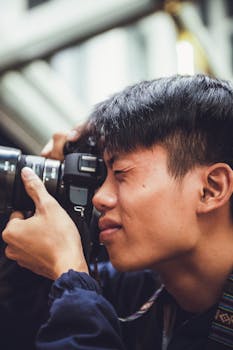
Photography is a wonderful medium through which we can capture the beauty of the world around us. Whether it’s a stunning landscape, a portrait of a loved one, or an action shot of a sporting event, photography allows us to forever preserve these moments for posterity. However, capturing great photographs is not always easy, as it takes a combination of skill, patience, and creativity. In this article, we’ll focus on one particular technique that can help take your photography to new heights – experimenting with depth of field.Depth of field is the distance between the nearest and the farthest objects in a scene that appear in sharp focus in a photograph. It is controlled by adjusting the aperture size, or the opening in the lens through which light passes. A larger aperture (represented by a smaller f-number) will create a shallower depth of field, resulting in a blurry background and a sharp subject. Conversely, a smaller aperture (represented by a larger f-number) will create a deeper depth of field, resulting in a sharp background and a sharp subject.So, how can we use depth of field to create compelling photographs? Here are some tips:

1. Understand your lens: Different lenses have different ranges of apertures and maximum f-stops, which affect the depth of field. A prime lens with a wide aperture like f/1.4 or f/1.8 will produce a very shallow depth of field, while a zoom lens with a smaller maximum aperture like f/4 or f/5.6 will produce a deeper depth of field.2. Consider the subject: Some subjects lend themselves better to shallow depth of field than others. Portraits, for example, often look best when the background is blurry, as it helps to isolate the subject and draw the viewer’s attention to their face. Conversely, landscape photography often requires a deeper depth of field to capture the foreground, middle ground, and background in sharp focus.3. Experiment with different apertures: Don’t be afraid to experiment with different f-stops to see how they affect the depth of field in your photographs. Try taking the same shot at f/2.8, f/5.6, and f/16, and compare the results to see which one you like best.

4. Use manual focus: In some situations, the camera’s autofocus system may not accurately focus on the subject you want. Switching to manual focus can give you more control over where the camera focuses, allowing you to fine-tune the depth of field.5. Pay attention to the background: When creating a shallow depth of field, it’s important to pay attention to the background to ensure that there are no distracting elements that can detract from the subject. Look for clean, simple backgrounds that complement the subject.In conclusion, experimenting with depth of field is a great way to add depth and dimension to your photographs. By understanding how aperture affects depth of field, considering the subject, and experimenting with different settings, you’ll be able to create stunning images that truly capture the beauty of the world. So grab your camera and start exploring – you never know what stunning photos await!
 see all posts!
see all posts!







